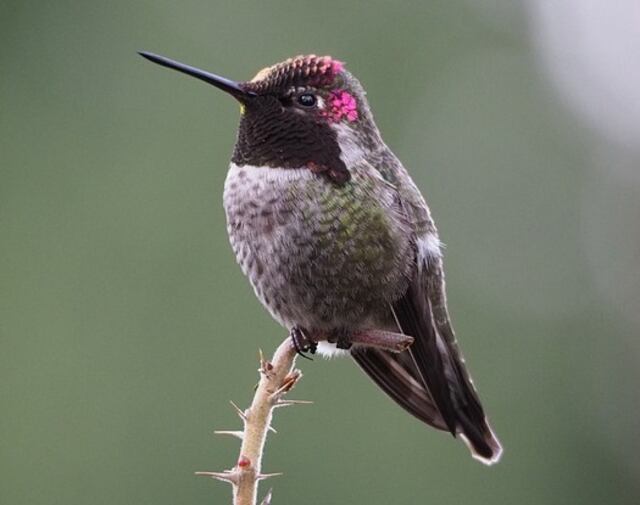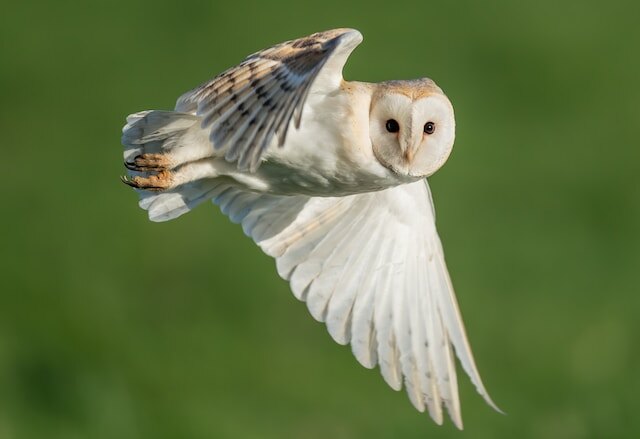Buckle up, bird enthusiasts! Curious about the inner workings of our feathered friends? Well, let’s dive right into the heart of the matter: “How many chambers does a birds heart have?” The short answer? Not what you’d expect!
Prepare to be amazed as we unravel the fascinating secrets of avian cardiovascular architecture. Let’s soar into the captivating world of bird hearts together!
Table of Contents
- 1 Avian Hearts: Unlocking the Secrets of Flight
- 2 Bird Heart Anatomy
- 3 Heart Chamber Size and Shape
- 4 Comparison to Mammal Hearts
- 5 Differences in Heart Structure
- 6 Similarities in Heart Function
- 7 Role in Circulatory System
- 8 Blood Oxygenation and Deoxygenation
- 9 Blood Flow Through Chambers
- 10 Importance of Bird Heart Research
- 11 Conservation Efforts for Birds
- 12 Human Health Applications
- 13 Cardiovascular Disease Prevention
- 14 Heart Disease Treatment Potential
- 15 Future Directions for Research
- 16 Frequently Asked Questions
- 16.1 What is the evolutionary history of the bird heart?
- 16.2 How do bird heart chambers differ in function from mammal heart chambers?
- 16.3 Are there any factors that can cause abnormalities in bird heart development?
- 16.4 How does the bird heart adapt to changing environmental conditions, such as high altitudes or extreme temperatures?
- 16.5 Can bird heart research provide insight into the development of new treatments for heart disease in humans?
- 17 Conclusion
- 18 Author
Avian Hearts: Unlocking the Secrets of Flight
Birds are known for their unique ability to fly and navigate the skies, and their cardiovascular system plays a significant role in this remarkable feat. Unlike mammals, birds have a distinct heart anatomy with four chambers that allow them to maintain their high metabolic rate during flight.
The complexity of the bird heart’s architecture and function has fascinated scientists for centuries, and research on bird hearts has led to significant advancements in the understanding of the circulatory system and potential applications in human health.
The bird heart’s four-chambered structure is a critical adaptation that enables birds to fly. The heart has two atria and two ventricles, which are separated by a muscular wall called the septum.
The right atrium receives deoxygenated blood from the body, which then flows into the right ventricle before being pumped to the lungs for oxygenation.
The oxygenated blood then returns to the left atrium, from where it flows into the left ventricle and is pumped out to the body.
This unique structure allows for a constant and efficient flow of oxygenated blood throughout the body, which is essential for the high metabolic demands of flight.

Bird Heart Anatomy
The internal structure of the avian circulatory system includes a specialized four-chambered organ responsible for blood circulation, which has distinct anatomical features and physiological functions compared to other vertebrates.
Bird heart adaptations have evolved over the course of their evolutionary history to support their unique metabolic demands, flight, and thermoregulation.
The bird heart is proportionally larger than the hearts of mammals of similar body size, and its cardiac performance is optimized for higher heart rates and stroke volumes.
The heart boasts two atria and two ventricles. On the right side, it collects deoxygenated blood from the body and propels it to the lungs, while the left side receives oxygenated blood from the lungs and distributes it throughout the body. This elegant system ensures a vital supply of oxygen reaches every nook and cranny.
The size and shape of the heart chambers vary among bird species depending on their ecological and evolutionary context, with some species having relatively larger right ventricles to accommodate their respiratory demands.
Understanding the anatomy and physiology of the bird heart is important for studying the evolution of avian circulatory systems, as well as for conservation efforts and potential applications in human health research.
Table: Bird Heart Anatomy
| Aspect | Description |
|---|---|
| Size | The relative size of a bird’s heart compared to its body size. |
| Location | The position of the heart within the bird’s chest cavity. |
| Structure | The components and arrangement of the different heart chambers. |
| Blood vessels | The major blood vessels connected to the bird’s heart. |
Heart Chamber Size and Shape
A thorough understanding of the size and shape of the heart chambers in avian species can inform research on the role of the bird’s circulatory system in oxygenation and deoxygenation of blood, which can have important implications for both avian conservation efforts and human health applications.
Chamber evolution, developmental differences, and physiological adaptations have resulted in unique heart structures in birds, with four chambers that are relatively small in size compared to mammals.
The right atrium and ventricle are responsible for receiving and pumping deoxygenated blood from the body, while the left atrium and ventricle receive and pump oxygenated blood from the lungs.
The size and shape of these chambers vary among bird species, with some adaptations for specific flight requirements. For example, birds with higher metabolic demands, such as hummingbirds, have relatively larger hearts and chambers.
Understanding these structural and functional differences in avian hearts can be used to inform research on the evolution of birds and their circulatory systems and can also have applications in human health, such as in the development of new treatments for heart disease.
Comparing the avian heart to mammal hearts reveals key differences in size and structure, which have important implications for how birds and mammals circulate oxygenated and deoxygenated blood throughout their bodies.
Table: Heart Chamber Size and Shape
| Chamber | Size | Shape |
|---|---|---|
| Right atrium | Small to moderate | Irregular |
| Right ventricle | Small to moderate | Crescent-shaped |
| Left atrium | Small to moderate | Irregular |
| Left ventricle | Moderate to large | Elongated |

Comparison to Mammal Hearts
Comparing the structural and functional differences between avian and mammal hearts provides insight into the distinct mechanisms of oxygenation and deoxygenation of blood in these two groups of organisms.
Bird heart evolution has led to a unique four-chambered heart structure that allows for efficient oxygenation of blood to meet their high metabolic demands.
In comparison to mammal hearts, bird hearts have a higher cardiac output, meaning that they can pump a greater volume of blood per minute.
This is due to the larger size of their left ventricle, which is responsible for pumping oxygenated blood to the body.
Additionally, birds have a unique pulmonary system where oxygenated and deoxygenated blood flow through different chambers, allowing for a more efficient exchange of gases.
While there are similarities in heart function between birds and mammals, the structural differences have significant implications for understanding the cardiovascular systems of these two groups of organisms.
Table: Comparison to Mammal Hearts
| Characteristic | Bird Heart | Mammal Heart |
|---|---|---|
| Number of chambers | Four chambers (two atria, | Four chambers (two atria, |
| two ventricles) | two ventricles) | |
| Heart size relative to body | Relatively larger in proportion | Relative to body size, |
| to body size | similar to body size | |
| Structure differences | Irregular shape, | Oval shape, |
| variable size and placement | consistent size and placement | |
| Blood circulation pattern | Oxygenated and deoxygenated | Oxygenated and deoxygenated |
| blood are partially mixed | blood are fully separated | |
| before being pumped | before being pumped | |
| to the body and lungs | to the body and lungs |
Differences in Heart Structure
Understanding the structural differences in the heart between birds and mammals is crucial for comprehending the unique mechanisms of oxygenation and deoxygenation of blood in birds.
The evolutionary significance of avian hearts lies in their physiological adaptations to meet the high metabolic demands of flight, which require a remarkably efficient circulatory system.
Compared to mammals, birds have smaller hearts relative to their body size, but have more muscular walls in their atria and ventricles.
Additionally, birds have a single systemic aorta, whereas mammals have two separate aortas, and the ventricles of bird hearts are more oval-shaped than the round ventricles of mammal hearts.
These differences contribute to cardiac performance variability between the two classes of animals.
However, despite these differences, both bird and mammal hearts are crucial organs that play similar roles in pumping blood throughout the body to maintain proper oxygenation levels.
Table: Differences in Heart Structure
| Aspect | Description |
|---|---|
| Chambers | How the chambers in a bird’s heart differ from those in mammals. |
| Valves | Unique features of the valves in a bird’s heart. |
| Septum | Differences in the structure of the septum between birds and mammals. |

Similarities in Heart Function
The similarities in heart function between birds and mammals are evident in their shared role of maintaining proper oxygenation levels through pumping blood throughout the body; interestingly, while birds have a higher heart rate than mammals, the stroke volume of birds is often larger, resulting in a similar cardiac output.
Both birds and mammals have evolved adaptations to their heart structures to meet their unique physiological demands.
For example, birds have a more muscular ventricle compared to mammals, which allows for greater force generation during heart contractions.
This is particularly important for birds, as they require a high cardiac output to support their high metabolic rates during flight.
Additionally, both birds and mammals can benefit from exercise in terms of heart health, as regular physical activity can reduce the risk of heart disease and improve overall cardiovascular function.
Understanding the similarities in heart function between birds and mammals can provide insights into the evolution of cardiac adaptations, and potentially even have implications for human health research.
Moving forward, it is important to examine the specific roles of each heart chamber in the circulatory system of birds.
Table: Similarities in Heart Function
| Function | Description |
|---|---|
| Pumping action | How the bird heart pumps blood similar to mammalian hearts. |
| Blood circulation | Similarities in the circulation of oxygenated and deoxygenated blood. |
| Heart rate regulation | The role of the heart in regulating the bird’s metabolic rate. |
Role in Circulatory System
The coordination of blood flow through the different sections of the bird’s circulatory system is dependent on the precise role played by each chamber of the heart.
The heart of a bird has four chambers, two atria, and two ventricles, similar to that of mammal hearts. However, the size and shape of the chambers are different in birds, reflecting the unique circulatory adaptations of these animals.
The bird heart’s role in the circulatory system is to meet the high metabolic demands of flight, which requires a continuous and efficient supply of oxygenated blood to the working muscles.
The evolutionary significance of the bird heart lies in its ability to deliver oxygenated blood at high pressure to the body tissues, enabling birds to maintain a high metabolic rate and sustain flight.
The heart chambers play a crucial role in regulating blood flow, ensuring that oxygenated and deoxygenated blood is efficiently separated and transported to the lungs and body tissues.
The subsequent section about blood oxygenation and deoxygenation will explore this process in more detail.
Table: Role in Circulatory System
| Aspect | Description |
|---|---|
| Oxygen transport | How the bird heart facilitates the transport of oxygen. |
| Nutrient distribution | The role of the heart in distributing nutrients to various organs. |
| Waste removal | How the bird heart helps in removing metabolic waste products. |

Blood Oxygenation and Deoxygenation
Bird respiration is a complex process that involves the exchange of gases between the bird’s lungs and the environment. The pulmonary circulation of birds plays a crucial role in oxygenating the blood and removing carbon dioxide.
The avian physiology allows for efficient respiration, as the bird’s lungs are connected to a unique system of air sacs that enable unidirectional airflow.
The heart of birds has four chambers, with the right and left atria receiving deoxygenated and oxygenated blood, respectively.
The role of the heart chambers in the bird’s circulatory system is to ensure the proper oxygenation and deoxygenation of blood.
Oxygen-poor blood enters the right atrium from the body and is then pumped into the right ventricle, which sends the blood to the lungs for oxygenation.
The oxygen-rich blood then returns to the heart, entering the left atrium and moving to the left ventricle, which pumps it to the rest of the body.
The blood flow through the different chambers is essential for the proper functioning of the bird’s circulatory system.
It ensures that oxygenated blood is delivered to the body’s tissues, while deoxygenated blood is taken to the lungs for oxygenation.
Understanding the intricacies of the bird’s heart and circulation is crucial for conservation efforts and has potential applications in human health research.
Efficient respiration in birds allows for high-energy activities such as flight. The unique structure of the avian respiratory system enables unidirectional airflow.
Studying the bird’s circulatory system can have implications for conservation efforts and human health research.
The blood flow through the chambers is the next subtopic, and it is important to understand how the heart’s structure facilitates this process.
Table: Blood Oxygenation and Deoxygenation
| Process | Description |
|---|---|
| Oxygenation | How the blood gets oxygenated within the bird’s respiratory system. |
| Deoxygenation | The process of blood deoxygenation in different areas of the body. |
Blood Flow Through Chambers
Understanding the mechanics of blood flow through the chambers of the avian heart is crucial for comprehending the bird’s circulatory system and its efficient oxygenation and deoxygenation of blood.
The blood flow regulation through the bird’s heart is complex, with four chambers working in tandem to ensure the proper circulation of blood.
The right atrium dutifully collects deoxygenated blood from the body, delivering it to the right ventricle. From there, the right ventricle takes charge, propelling the blood to the lungs where it undergoes the essential process of oxygenation.
The oxygenated blood returns to the left atrium and then moves into the left ventricle, which pumps it out to the rest of the body.
This process is essential for maintaining proper cardiac output and is aided by several physiological adaptations, including a larger heart and higher heart rate in birds compared to mammals.
Understanding blood flow through the chambers of the avian heart is essential for researchers to comprehensively study the bird’s circulatory system and provide insights into the physiological adaptations that allow them to thrive in their environments.
Table: Blood Flow Through Chambers
| Blood Flow | Chamber | Function |
|---|---|---|
| Deoxygenated blood | Right Atrium | Receives deoxygenated blood from the body |
| Right Ventricle | Pumps deoxygenated blood to the lungs for oxygenation | |
| Oxygenated blood | Left Atrium | Receives oxygenated blood from the lungs |
| Left Ventricle | Pumps oxygenated blood to the rest of the body |

Importance of Bird Heart Research
Research on the avian cardiovascular system provides valuable insights into the physiological adaptations that enable birds to thrive in diverse environments, such as high altitudes, extreme temperatures, and prolonged flights, illuminating the remarkable evolutionary mechanisms that have allowed them to survive and excel.
Understanding the complex structure and function of the bird’s heart has significant clinical implications for human health as well, as we can learn from the bird’s unique adaptations to develop new treatments for heart disease.
Additionally, the avian heart is a crucial component of avian evolution, and its study can help us better understand the evolutionary history of birds and their relationships to other organisms.
Such research is essential for the conservation of bird species, as understanding their unique cardiovascular adaptations can guide conservation efforts and help us protect these incredible creatures.
Conservation Efforts for Birds
Conservation efforts for avian species can benefit greatly from research into the adaptations of the cardiovascular system, which can guide efforts to protect these remarkable creatures and their unique environments.
The bird habitat is not only important for the survival of individual species but also for the maintenance of migration patterns and the overall health of ecosystems.
By studying the structure and function of bird hearts, researchers can gain insights into how avian species have adapted to their environments, which can inform population management strategies.
For example, understanding how birds regulate their heart rate during periods of high activity can help conservationists develop methods to reduce stress on birds during capture and handling.
Additionally, knowledge of how birds transport oxygen and nutrients throughout their bodies can inform habitat management efforts to ensure that birds have access to the resources they need to thrive.
Finally, research on bird hearts can also have implications for human health, as many of the adaptations that allow birds to thrive in challenging environments may have medical applications.
For example, the ability of birds to maintain high levels of physical activity while minimizing oxygen consumption could inform the development of treatments for heart disease.
Human Health Applications
The examination of avian cardiovascular adaptations may provide insights into potential medical treatments for heart disease.
Avian models have been studied extensively to understand the unique adaptations of the avian heart and its potential therapeutic potential for cardiovascular disease prevention.
The bird heart is capable of rapid adaptations to high demands of oxygen consumption during flight, and understanding the mechanisms behind these adaptations may provide clues to improve human heart health.
Additionally, the similarities and differences in heart structure and function between birds and mammals offer a unique perspective in the search for treatments for heart disease.
By studying the avian heart, researchers may uncover novel therapies and preventative measures for cardiovascular disease in humans.
This research holds great promise for the millions of people affected by heart disease worldwide.
Cardiovascular Disease Prevention
Nutrition intervention, physical activity, and medication adherence are all important factors in preventing cardiovascular disease in humans.
However, recent research has shown that studying the heart structure and function of birds may also provide valuable insights into potential preventative measures.
By examining the unique adaptations of bird hearts, such as their ability to maintain high levels of oxygen during flight, researchers can identify novel approaches to prevent heart disease in humans.
In addition, bird heart research may also lead to the discovery of new treatments for heart disease.
By understanding the similarities and differences in heart structure and function between birds and humans, scientists may be able to develop new drugs or therapies that target specific aspects of cardiovascular disease.
Therefore, studying the heart of birds has the potential to not only inform preventative measures but also revolutionize heart disease treatment.

Heart Disease Treatment Potential
Studying the unique adaptations of avian hearts has the potential to revolutionize the treatment of cardiovascular disease by identifying new therapies that target specific aspects of the disease.
The intricate structure of a bird’s heart, with its four chambers and efficient circulation system, could provide valuable insights into developing potential therapies for human heart conditions.
Recent clinical trials have already shown promising results using drugs that mimic the physiological processes in bird hearts to help treat heart failure in humans.
This highlights the potential of bird heart research to not only revolutionize our understanding of cardiovascular disease but also to develop new drugs and therapies that can be used in the treatment of heart disease.
As such, future directions for research in bird heart anatomy and physiology could provide further insights into the mechanisms of heart disease, which may ultimately contribute to the development of more effective treatments for this condition.
Future Directions for Research
Exploration of uncharted territories in avian cardiovascular research may unveil novel perspectives that could potentially transform current approaches towards combating heart disease.
The use of genetic modification in avian models could provide insights into the genetic underpinnings of cardiovascular disease and aid in developing therapies.
Behavioral studies of bird flight and diving could reveal the impact of extreme physiological stress on the heart and inform preventative measures.
Additionally, novel imaging techniques, such as high-resolution MRI and computational modeling, may allow for a better understanding of the intricate structure and function of the avian heart.
Future research in these areas has the potential to expand our knowledge of avian cardiovascular physiology and contribute to the development of innovative treatments for heart disease in birds and humans alike.

Frequently Asked Questions
What is the evolutionary history of the bird heart?
Evolutionary adaptations have played a significant role in shaping the anatomical and physiological characteristics of the bird heart.
Comparative anatomy studies have revealed that birds have evolved several unique features in their heart structure that differ from ancestral heart structures of reptiles.
The bird heart is characterized by a high degree of specialization, with a four-chambered structure that facilitates efficient oxygenation and deoxygenation of blood.
The size and shape of the heart chambers vary depending on the species, but they are generally smaller and more elongated than mammalian hearts.
Despite these differences in heart structure, the function of the bird heart is similar to that of mammals, with the chambers working together to pump blood throughout the circulatory system.
The study of bird heart evolution is crucial for understanding the evolutionary history of vertebrate cardiovascular systems and for informing conservation efforts.
How do bird heart chambers differ in function from mammal heart chambers?
The heart chambers of birds differ in function from those of mammals, despite their overall similar anatomy.
While both types of hearts have four chambers, the bird heart has a more efficient circulatory system due to the structure and function of its ventricles.
The right ventricle of the bird heart is larger and more muscular than the left, allowing for greater pulmonary circulation and oxygenation of blood.
In contrast, the left ventricle is smaller and less muscular, as the majority of oxygenated blood is directed to the body’s tissues rather than returning to the heart.
This unique configuration allows for a more efficient oxygenation of blood and contributes to the bird’s ability to fly at high altitudes.
Comparative anatomy of the heart plays an important role in understanding heart function and the circulatory system in different species.
Are there any factors that can cause abnormalities in bird heart development?
Abnormalities in bird heart development can be caused by various factors including genetic mutations and environmental factors that can affect embryonic development.
Genetic mutations can lead to malformations of the heart chambers, valves, or blood vessels, resulting in congenital heart defects.
Environmental factors such as exposure to toxins or stress during embryonic development can also impact heart development.
These abnormalities may affect blood flow through the heart and the bird’s ability to pump oxygenated blood to its body.
Understanding the underlying mechanisms of heart development in birds can aid in the identification and prevention of these abnormalities, and may also have implications for human health.
How does the bird heart adapt to changing environmental conditions, such as high altitudes or extreme temperatures?
Birds have the ability to adapt to changing environmental conditions, such as high altitudes or extreme temperatures, through physiological changes in their heart.
Heart adaptation in response to environmental factors is a complex process that involves a range of mechanisms, including changes in heart rate, cardiac output, and blood flow.
For example, birds that live at high altitudes have larger hearts with more efficient oxygenation capabilities, enabling them to maintain adequate oxygen delivery to their tissues despite the lower oxygen concentration in the air.
Similarly, birds that live in cold environments have smaller hearts with higher metabolic rates to generate more heat.
These adaptations are essential for birds to survive in their natural habitats and are crucial for their continued existence.
Studying heart adaptation in birds can provide insights into the mechanisms of cardiovascular physiology that are relevant to human health, such as heart disease and stroke.
Can bird heart research provide insight into the development of new treatments for heart disease in humans?
Research on the bird heart has the potential to provide valuable insights into the development of new treatments for heart disease in humans.
Animal testing, genetic modification and pharmaceutical research have all been used to study the bird heart.
Researchers have found that birds have a unique adaptation to changing environmental conditions, such as high altitudes or extreme temperatures, which can be valuable for the development of new treatments for heart disease in humans.
For example, a study found that the hearts of emperor penguins can survive for extended periods of time without oxygen during dives, which could inform the development of treatments for human heart disease.
While animal testing is controversial, it has been a crucial tool for pharmaceutical research, and studying the bird heart has the potential to provide valuable insights into the development of new treatments for heart disease in humans.

Conclusion
In conclusion, the bird heart exhibits a unique anatomy that enables it to meet the high metabolic demands of flight. Its four-chambered structure allows for efficient oxygenation of the blood and separation of deoxygenated and oxygenated blood.
Although the bird heart differs from mammal hearts in its size, shape, and structural arrangement, it shares similar functions in supporting the circulatory system and delivering nutrients and oxygen to the tissues.
Research on bird hearts not only contributes to our understanding of avian physiology, but also has potential implications for human health.
Studying the adaptations of bird hearts can inform the development of cardiovascular disease prevention and treatment strategies that target metabolic and circulatory function.
As we continue to explore the intricacies of the bird heart and its role in avian biology and human health, we gain a deeper appreciation for the wonder and complexity of the natural world.
As the poet Robert Frost once said, ‘The heart can think of no devotion greater than being shore to the ocean – holding the curve of one position, counting an endless repetition.’
In this way, our understanding of the interconnectedness of all living things can inspire a lifetime of reverence and stewardship for the planet we call home.




